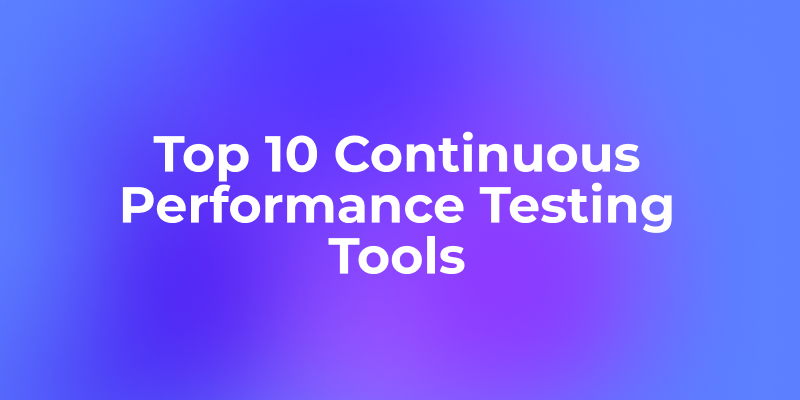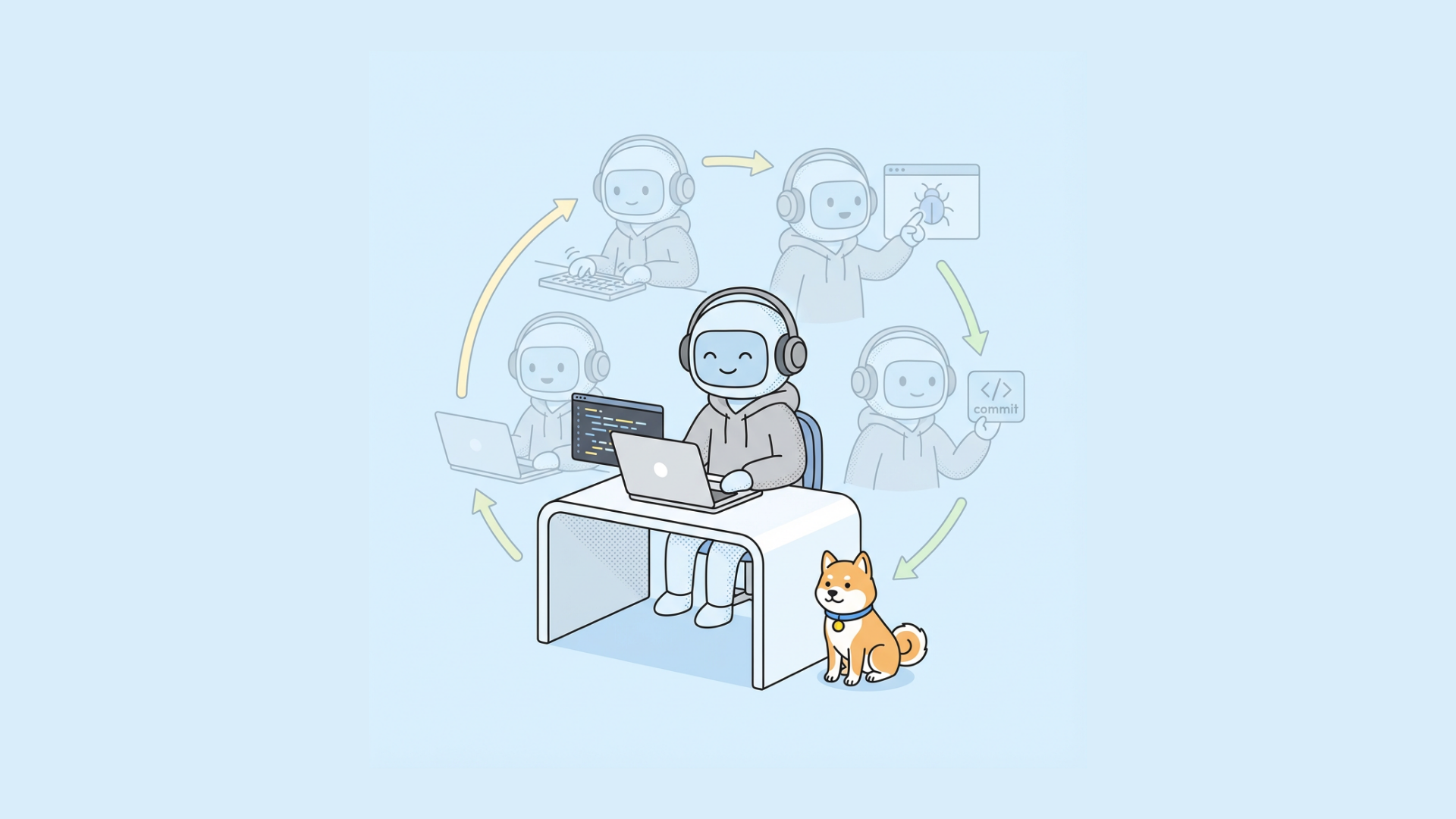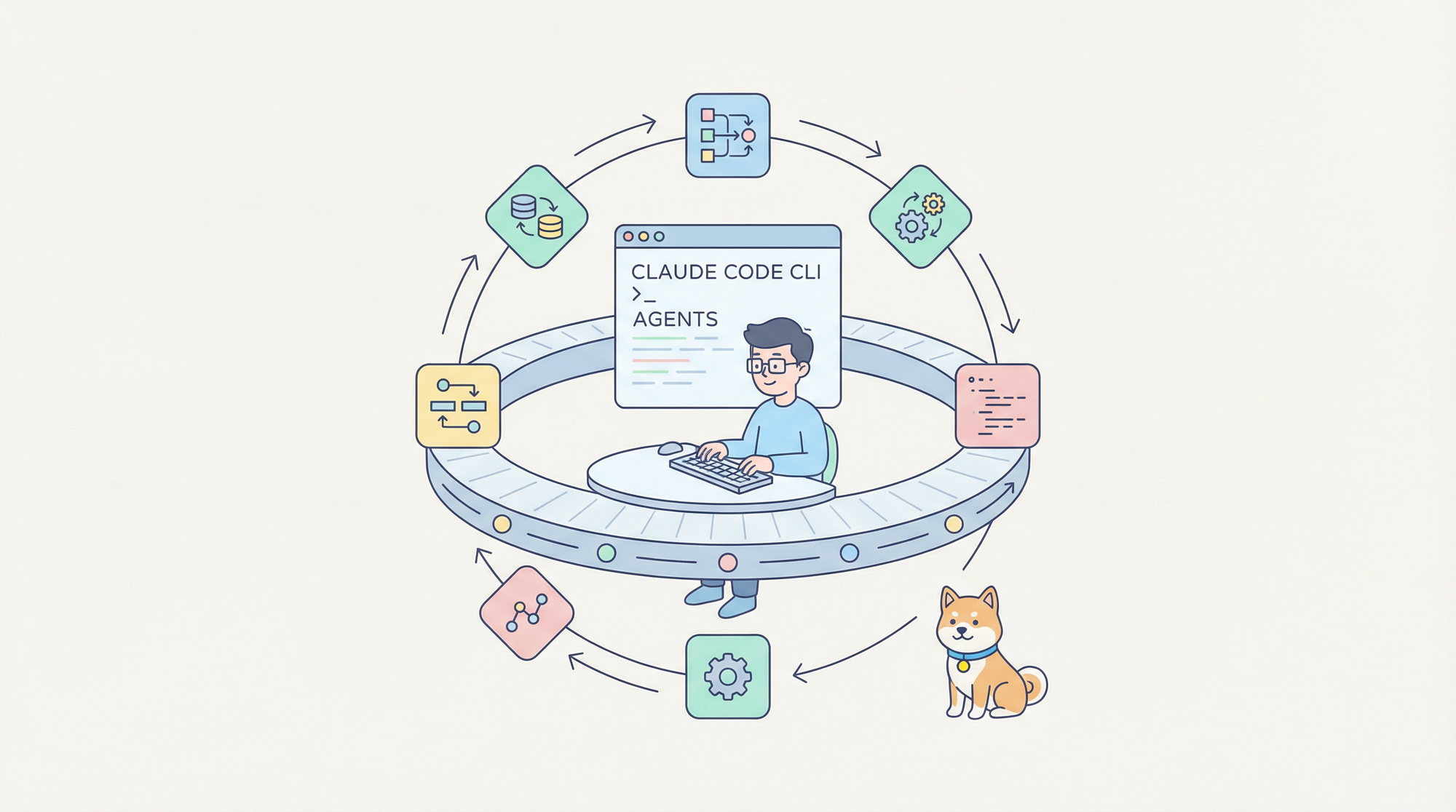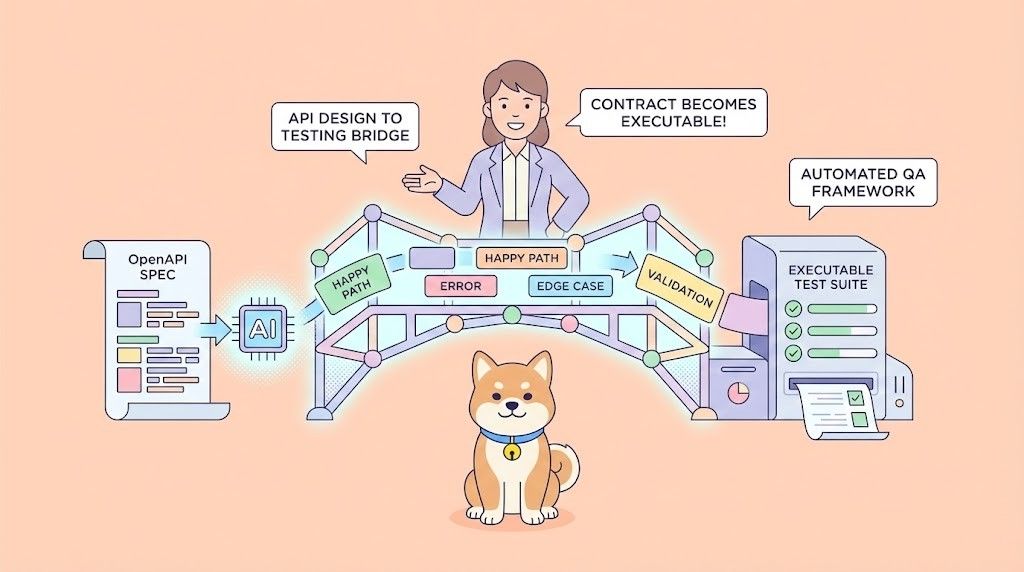In today's fast-paced digital world, applications are expected to deliver seamless, fast, and reliable experiences, even under heavy load. Continuous performance testing ensures your systems can handle real-world traffic and scale effectively without compromising on user experience.
Here’s a curated list of the top 10 continuous performance testing tools that developers, testers, and DevOps teams can leverage.
Want an integrated, All-in-One platform for your Developer Team to work together with maximum productivity?
Apidog delivers all your demands, and replaces Postman at a much more affordable price!
What Is Continuous Performance Testing?
Traditional performance testing often happens late in development or right before release, increasing risk and limiting fix time. Continuous performance testing changes the game by embedding load and stress testing into your CI/CD pipelines, running tests regularly as part of every build or integration.
This approach provides:
- Early identification of performance regressions
- Faster feedback for developers
- Greater confidence in scalability and stability
- Efficient resource usage through automated scheduling
Why Continuous Performance Testing Is Essential
Modern applications run on complex architectures microservices, APIs, cloud instances making performance unpredictable without continuous monitoring. User expectations also continue rising, with downtime or lag driving customer churn.
Let’s face it: deploying an app once and “hoping” it works under pressure is a recipe for disaster. Apps today are:
- Constantly changing with agile sprints and rapid deployments.
- Global in scale, requiring support for users across regions.
- API-driven, meaning back-end bottlenecks can ruin the entire experience.
Continuous performance testing solves these issues by embedding checks into every stage of the software lifecycle.
Continuous performance testing helps teams:
- Deliver better user experiences every release
- Avoid costly production incidents
- Optimize infrastructure usage and cost
- Maintain SLAs and compliance standards
Instead of "big bang" stress tests before launch, teams can detect bottlenecks early, fix them, and deploy confidently.
Key Features to Look for in a Continuous Performance Testing Tool
Not all tools are created equal. Before we rank the top 10, here’s what you should look for:
- CI/CD Integration → Does it plug into Jenkins, GitHub Actions, or GitLab?
- Scalability → Can it simulate thousands (or millions) of users in the cloud?
- Reporting & Analytics → Does it provide real-time dashboards?
- Protocol Support → APIs, web apps, mobile, and microservices.
- Ease of Use → Scriptless vs. scripting flexibility.
- Cost Efficiency → Pay-per-use or enterprise licensing.
1. Apidog
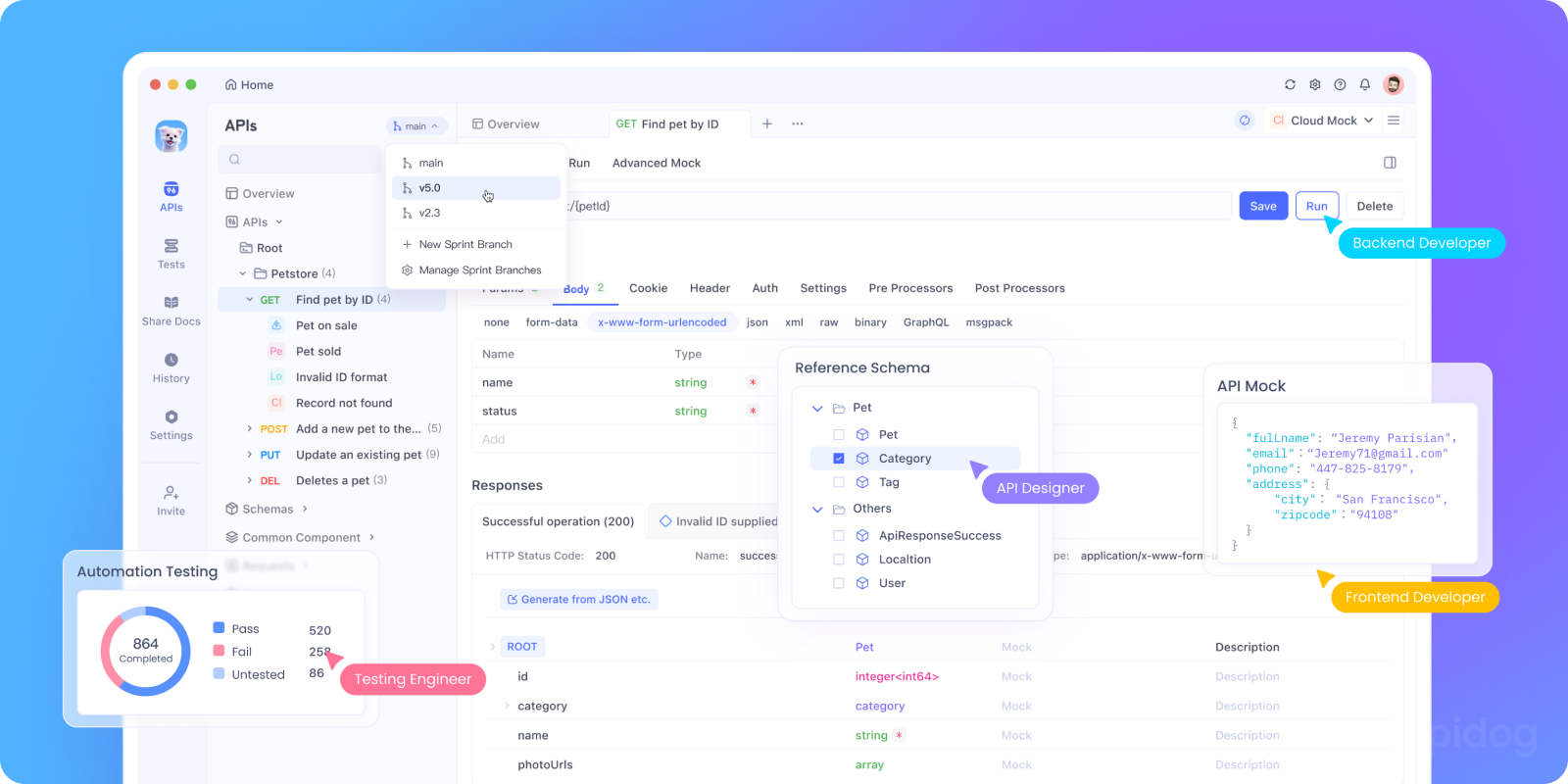
You may know Apidog primarily as an API testing and collaboration platform, but here's the kicker: Apidog also integrates beautifully into continuous testing workflows. Apidog stands out by combining API functional and performance testing in a low-code platform. It enables developers and testers to create, automate, and monitor API tests continuously, integrating seamlessly with CI/CD pipelines.
Apidog allows you to automate functional and performance checks for APIs within your pipelines. By pairing Apidog's automation with other performance testing tools, you can ensure your APIs are validated at both the functional and performance levels.
Key Features:
- Visual test case creation
- Mock servers for parallel development
- Collaboration features for team workflows
Best for: Teams who need an all-in-one API lifecycle management platform.
2. BlazeMeter
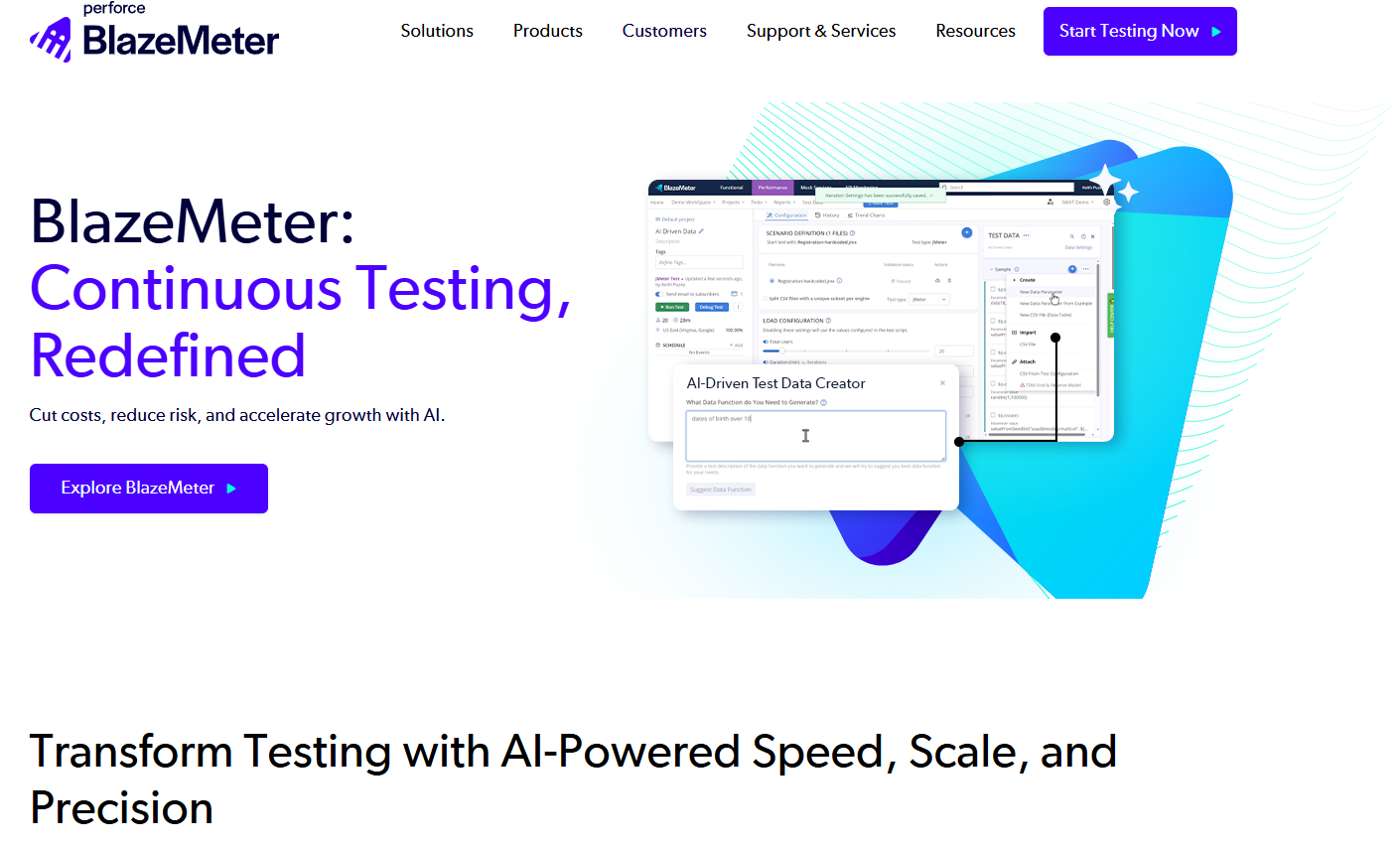
Built on Apache JMeter, BlazeMeter delivers cloud-native, scalable load testing with robust performance metrics and CI/CD integrations. It supports millions of virtual users from different geographies.
Key Features:
- Multi-protocol support
- Distributed testing from multiple cloud locations
- AI-powered anomaly detection
- Real-time, shareable reports
Why it’s great:
- Cloud scalability up to millions of users.
- Real-time dashboards and advanced analytics.
- Compatible with JMeter, Gatling, and Selenium scripts.
Best for: Enterprises needing scalable, global load testing.
3. NeoLoad
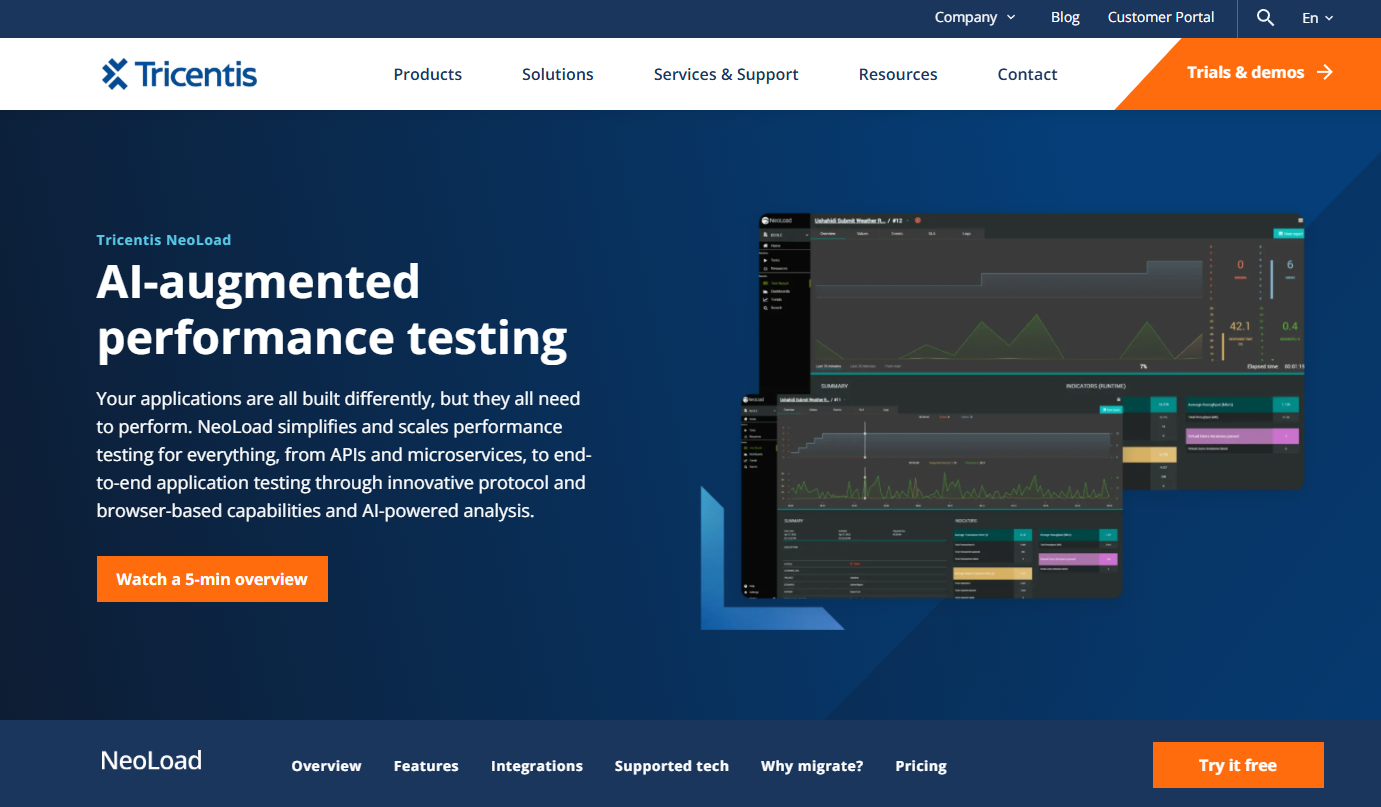
NeoLoad by Tricentis focuses on continuous performance testing for complex environments with automation and integrations designed for enterprise pipelines.
Key Features:
- Model-based testing
- REST API performance testing
- CI/CD tool compatibility
- Real-time dashboarding
4. LoadRunner Cloud (Micro Focus)

Micro Focus LoadRunner is a heavyweight in enterprise performance testing. A comprehensive solution for performance and load testing across diverse app types, LoadRunner Cloud lets teams automate tests and analyze vast datasets.
Key Features:
- Cloud-scale load generation
- End-to-end performance monitoring
- Integration with DevOps tools
- Supports a wide range of protocols.
Drawback: Licensing costs can be high.
5. Gatling FrontLine

Gatling FrontLine offers real-time, developer-friendly load testing built on an open-source foundation with enterprise features. A developer favorite, Gatling is known for its Scala-based DSL and real-time metrics.
Key Features:
- High-performance test execution
- Advanced analytics
- Automation and CI/CD integration
Best for: Developers who want code-driven performance tests.
6. k6 (Grafana Labs)
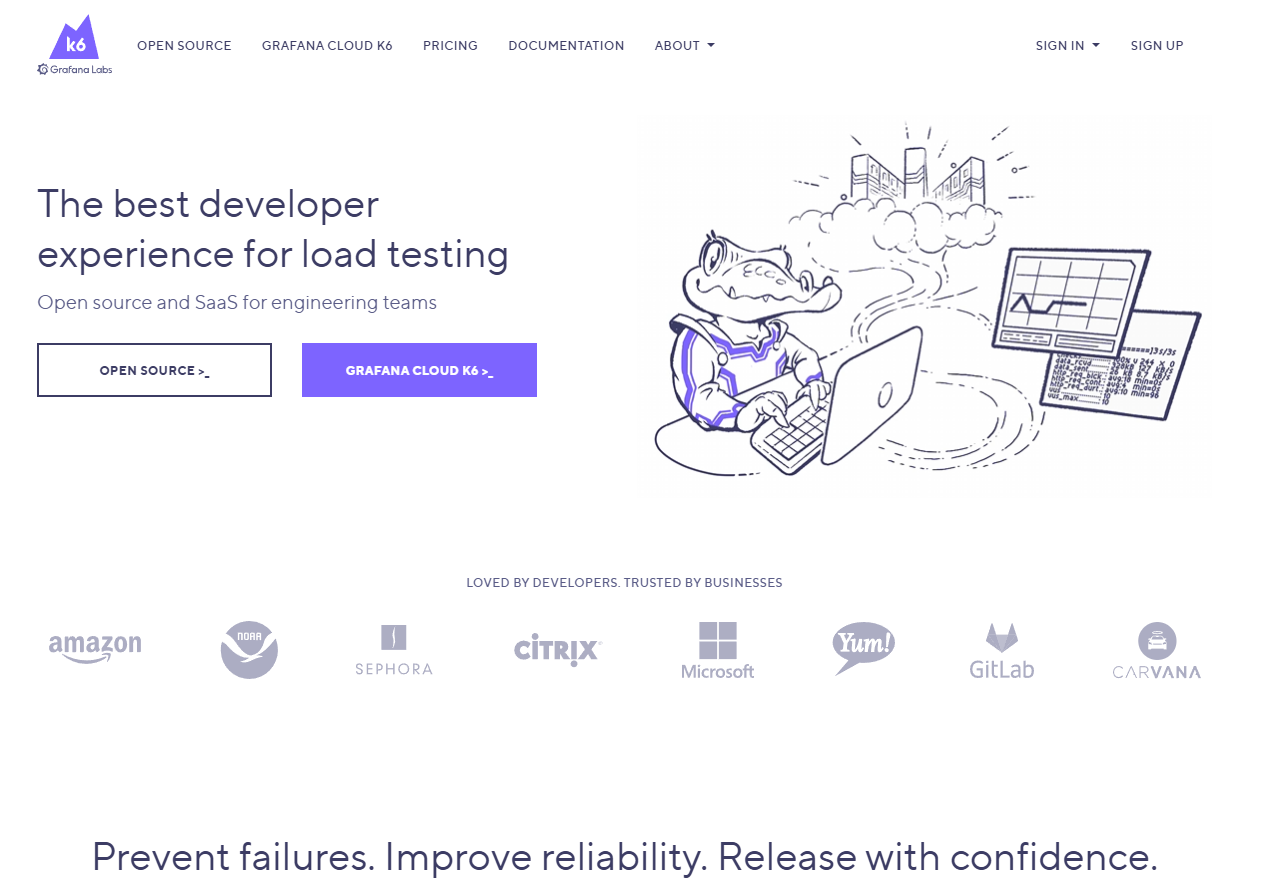
k6 shines for scriptable, cloud and on-premises load testing, optimized for modern developer workflows. A rising star, k6 is open-source and developer-friendly with modern scripting in JavaScript/TypeScript.
Key Features:
- JavaScript-powered scripting
- Integration with Grafana dashboards
- Cloud-based execution with detailed insights
Why it’s great:
- Perfect for CI/CD pipelines.
- Lightweight and fast.
- Can run locally or in the cloud with k6 Cloud.
Best for: DevOps teams embracing modern testing stacks.
7. RedLine13
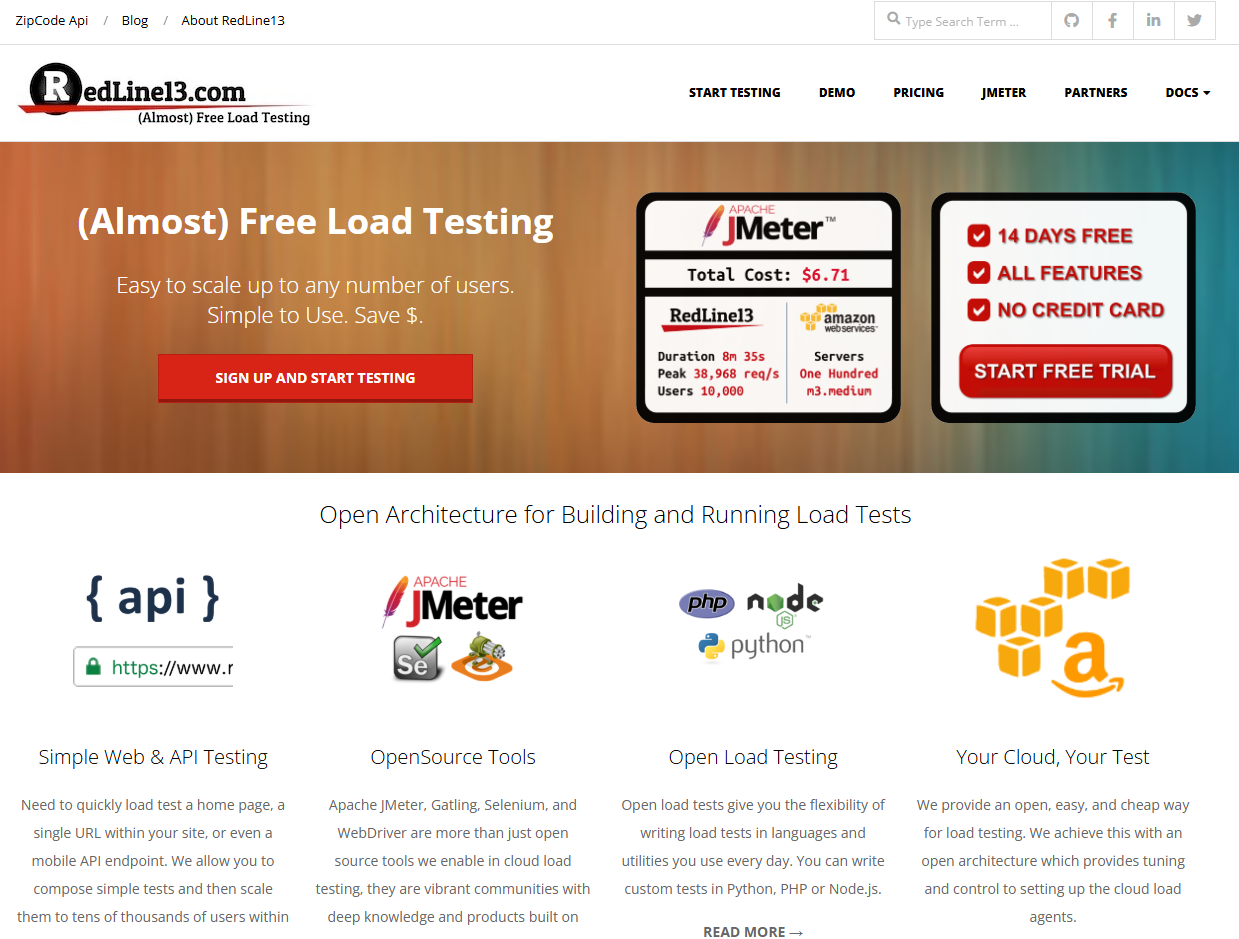
If cost is a big concern, RedLine13 is a great choice. RedLine13 is a cost-effective, cloud-based load testing tool that integrates and supporting multiple open source frameworks like JMeter, Gatling, and more.
Key Features:
- Easy integration with CI tools
- Scalable load testing infrastructure
- Detailed user reports and analytics
Why it’s great:
- Pay only for AWS usage.
- Easy scaling with cloud resources.
- Good for budget-conscious teams.
8. LoadNinja
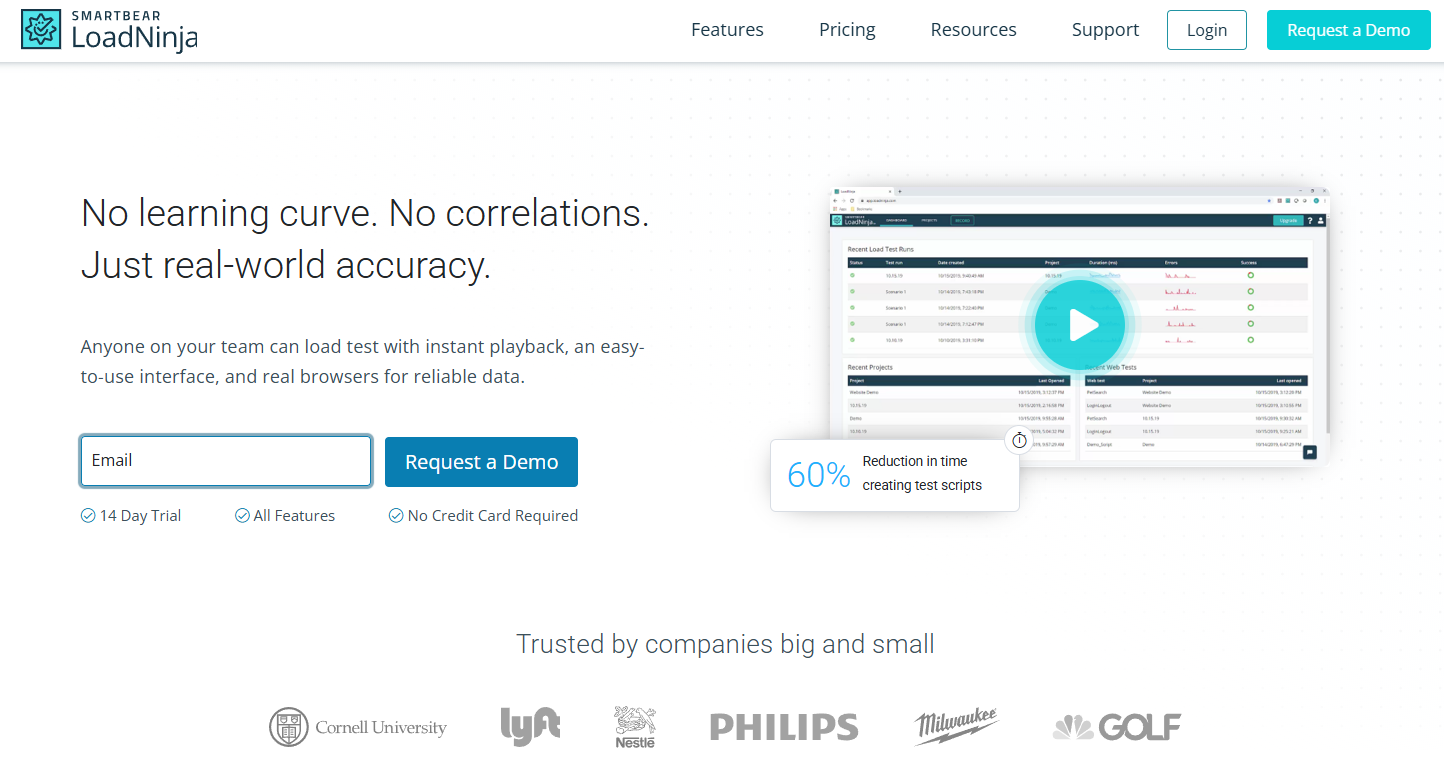
LoadNinja delivers scriptless, real browser-based load testing with advanced debugging and metrics.
Key Features:
- Browser-based load generation
- Visual debugging tools
- CI/CD pipeline compatibility
9. Silk Performer
Silk Performer supports enterprise-grade load testing with AI analytics and cross-platform support.
Key Features:
- Protocol and real user load testing
- Comprehensive root cause analysis
- Pipeline and DevOps integration
10. WebLOAD (RadView)
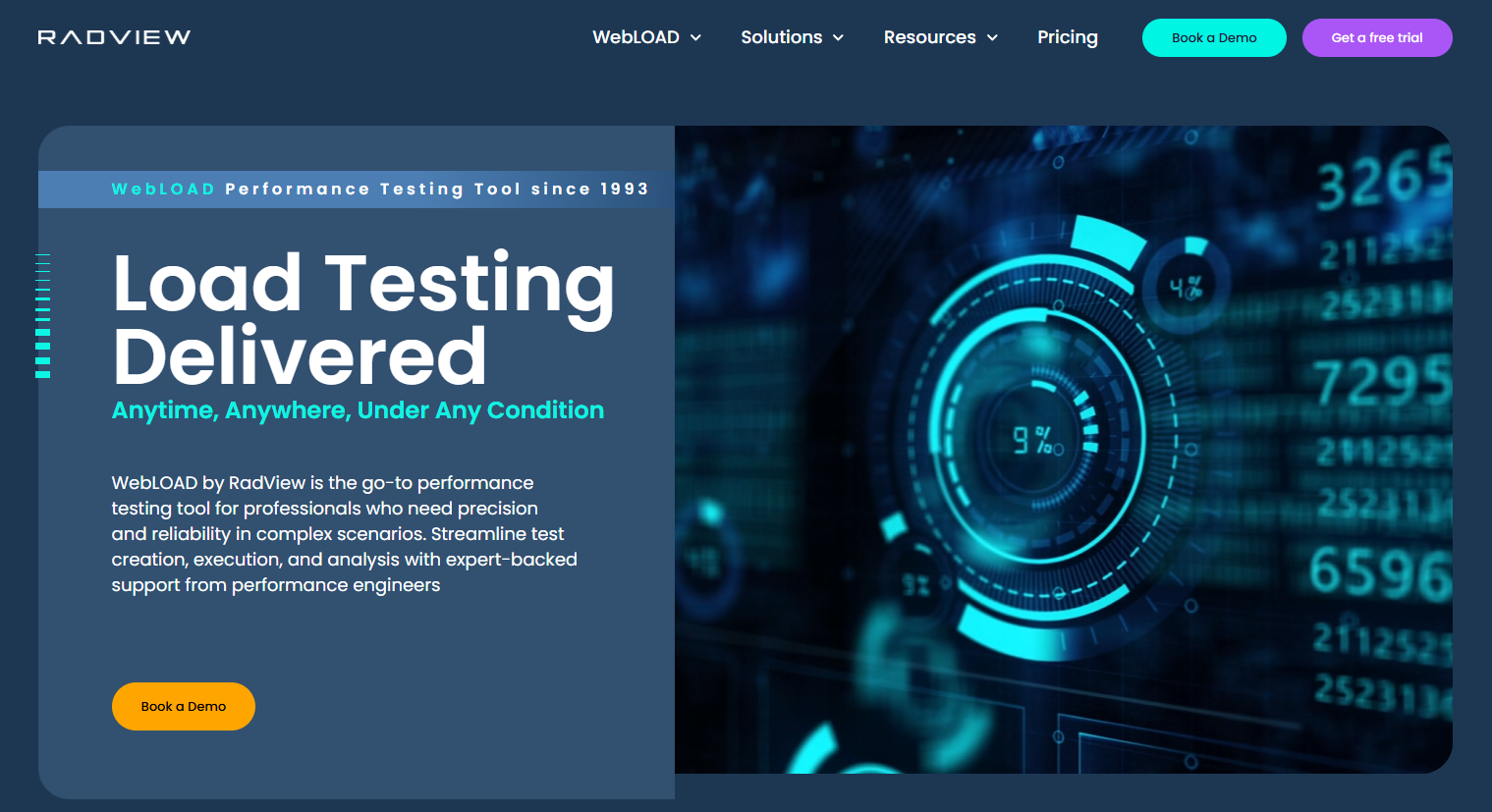
WebLOAD offers a scalable load testing solution with strong analytics and testing orchestration features.
Key Features:
- Distributed load generation
- Detailed scripting and reporting
- Integration with continuous testing environments
How to Choose the Right Tool for Your Continuous Performance Testing Needs
Consider these factors:
- Supported application types and protocols
- Team skill levels and preferred scripting languages
- CI/CD integration capabilities
- Scalability and cloud support
- AI and self-healing test features
- Budget and licensing models
For API-dominant projects, Apidog combines API lifecycle and continuous performance testing in one beginner-friendly platform.
Benefits of Continuous Performance Testing
By using these tools, you’ll unlock benefits like:
- Early Detection of Bottlenecks: No more surprises on launch day.
- Improved User Experience: Faster apps = happier users.
- Reduced Downtime: Prevent crashes under high demand.
- Stronger DevOps Culture: Continuous testing aligns with CI/CD.
- Cost Savings: Fixing performance issues early is cheaper.
Common Challenges and How to Overcome Them
- Data Overload → Focus on key metrics: response times, throughput, error rates.
- Tool Complexity → Start with user-friendly tools (like Apidog + BlazeMeter).
- Scaling Costs → Optimize test frequency and scope.
- Integration Issues → Ensure your tool works smoothly with CI/CD pipelines.
Conclusion: Continuous Performance Testing Is No Longer Optional
Continuous performance testing has become essential for delivering software that consistently meets high user expectations. It’s no longer just a trend—it’s the foundation of modern software delivery.
Tools like Apidog, BlazeMeter, JMeter, k6, and others each serve unique needs, but all share the same goal: ensuring applications are reliable, scalable, and fast. With the right setup, your team can automate performance checks, get quicker insights, and scale confidently.
If you’re new to this, a smart approach is to combine Apidog for continuous API validation with BlazeMeter or k6 for large-scale load testing. This combination guarantees that your APIs not only function correctly but also handle real-world demand seamlessly.
🚀 Ready to take your API and performance testing strategy to the next level? Don’t wait until performance issues reach production. Download Apidog for free today and start building reliable, high-performance applications with streamlined continuous testing and monitoring workflows.
